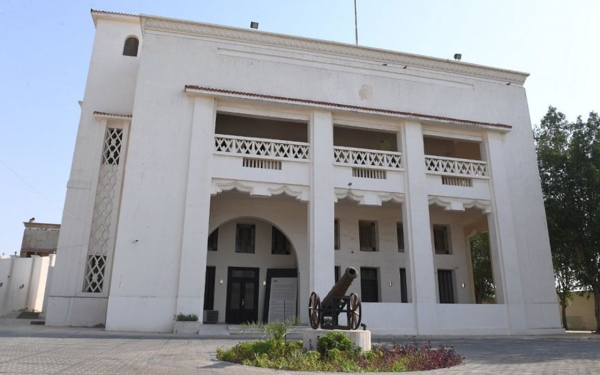

Khuzam Palace is a historic royal palace commissioned by the Founding King Abdulaziz Bin Abdulrahman Al Saud as both a royal residence and a hub for managing citizens' affairs. Located in Jeddah City, within the Makkah al-Mukarramah Province, it stands as one of the Kingdom of Saudi Arabia's first buildings made from cement and iron.
Agreements and treaties at Khuzam Palace
Khuzam Palace stands as a cornerstone in the Kingdom's economic transformation history. Just one year after its establishment, the first oil exploration mission was launched from there, through an economic agreement signed with Standard Oil of California in 1933. This was followed by other economic agreements, including mutual urban development projects with Egypt, the Treaty of Jeddah with the British government, and a treaty of friendship and good neighborliness with Kuwait.
Construction of Khuzam Palace
King Abdulaziz ordered the construction of Khuzam Palace in 1928, and it took about five years to complete, finishing in 1932. This palace became his main residence upon his arrival in Jeddah, after previously residing in Nassif House and al-Qasr al-Akhdar (Green Palace). On April 15, 1932, King Abdulaziz stayed at Khuzam Palace for the first time after its completion and welcomed representatives from foreign countries there.
Description of Khuzam Palace
Khuzam Palace features three facades, one facing al-Nazlah al-Yamaniyah Neighborhood, a second facing the Eid prayer grounds, and a third facing al-Sabil area. The palace is two stories high, with additional annexes on its southern and western sides. Its surrounding wall reaches a height of three m, and entry is possible through two gates crafted in Jeddah's architectural and decorative style of that period. Khuzam Palace stands out as a unique structure, built not only with cement and iron but also with hard limestone sourced from the Red Sea coast.
Significance of Khuzam Palace
Khuzam Palace has been a historical and political hub, serving not only administrative roles but also as one of the royal residences where the Founding King spent part of his life. It was a council venue (Majlis) for receiving state guests and conducting both governmental and public affairs.
Following the passing of King Abdulaziz, the palace’s significance endured; in 1955, its main facade was featured on Saudi paper currency, symbolizing its iconic status. Under King Saud Bin Abdulaziz Al Saud, the palace was expanded to house government administrative offices, and in 1963, it was officially designated as a royal guest palace with additional facilities.
Khuzam Palace: A historic landmark
In 1981, Khuzam Palace was transferred to the Antiquities and Museums Department within the Ministry of Knowledge at that time (now the Ministry of Education) and was converted into a museum under the direction of King Fahd Bin Abdulaziz Al Saud. The department restored part of the palace’s facade, and it opened in 1995. This restoration carefully preserved the architectural integrity of the building, with part of the palace being converted into a museum. It was furnished and equipped with exhibits that cover all historical eras, chronologically arranged from early history through the Islamic periods to the modern era, positioning the museum on par with international standards.
Khuzam Palace hosting the International Biennial of Contemporary Art of the South
In 2021, Khuzam Palace in Jeddah hosted the International Biennial of Contemporary Art of the South, Bienalsur. Launched by the Saudi Ministry of Culture, the event carried the theme "Echoes: Between the Analogue and the Virtual" and followed its initial exhibition in Riyadh City’s Jax District. The Kingdom was one of the international destinations for the biennale's third edition, which spanned over 120 locations across fifty cities in twenty-three countries, with the participation of more than four hundred artists.
Related quizzes
Related articles

